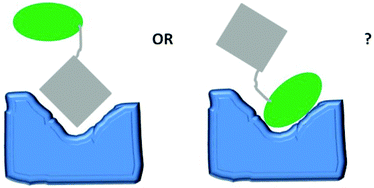Fluorescent analogues provide important tools for biochemical/biophysical research. However, the analogues contain chemical modifications much larger than those known to affect ligand-binding, such as the inversion of a carbon centre or substitution of an atom. We lack experimental tools and protocols to select the most appropriate fluorescent analogue. Herein, we use several NMR spectroscopy methods, including Saturation Transfer Difference (STD), STD competition and transferred nuclear Overhauser effect spectroscopy (Tr-NOESY), as tools to select appropriate fluorescent probes. Annexin A6 (AnxA6) is a ubiquitous protein that forms in vitro GTP-induced ion channels. We used this protein as a model and screened guanosine triphosphate (GTP) and four fluorescent analogues against AnxA6. STD reported that the GTP moiety of all ligands made similar contacts with the protein, despite additional interactions between the fluorescent tags and AnxA6. Competition STD experiments verified that the analogues and GTP bind to the same site. Tr-NOESY indicated that the bound conformation of the base relative to ribose is altered for some analogues compared to GTP. MANT-GTP or the BODIPY thioester of guanosine 5′-O-(3-thiotriphosphate) are the most suitable fluorescent analogues for AnxA6, according to NMR. These results reveal NMR as a useful technique to select and design proper fluorescent tags for biochemical/biophysical assays.

You have access to this article
 Please wait while we load your content...
Something went wrong. Try again?
Please wait while we load your content...
Something went wrong. Try again?


 Please wait while we load your content...
Please wait while we load your content...